Cash
Through a current account
Electronic card (Visa, Master, Dina, etc.)
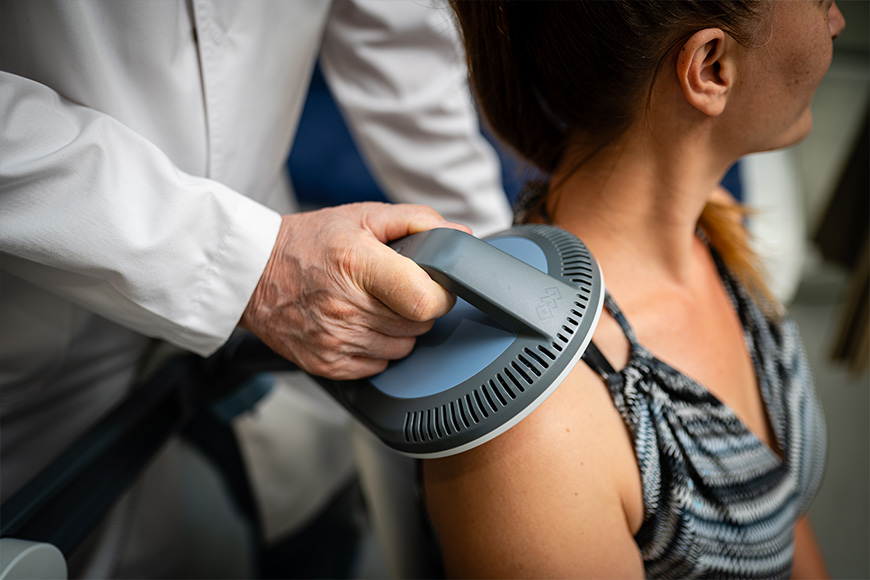
SPECIAL DISCOUNT
50% discount and hernia disc treatment package at a super affordable price of 4,800 rsd (instead of 9,600 rsd). Heal a herniated disc quickly and effectively. Make an appointment now!
The shoulder joint consists of three bones: the upper part of the upper arm (humerus), the scapula and the clavicle. The entire shoulder joint is surrounded by a joint capsule filled with fluid that lubricates the joint and makes it function properly.
If the joint loses its mobility or a part of its mobility, as a consequence there is a reduced secretion of that fluid and further complications (arthrosis, crepitations, frozen shoulder, contractures in the joint itself). The walls of the capsule are made up of ligaments that connect the muscle to the bone.
Dynamic stabilizers of the shoulder are made up of four muscles: supraspinatus, infraspinatus, teres minor and subscapularis. They are responsible for the humerus standing firmly in the cup. The shoulder is the most mobile joint in our body, so injuries are very common.
Pain in the shoulder can continue due to calcification, that is, the accumulation of calcium in the tendons of the rotator cuff. Additionally, shoulder pain can be a result of a rotator cuff injury. Ruptures of the rotator cuff occur more often in later life, but they can also occur in younger people, mostly athletes.
This injury occurs in the elderly as a result of falling or straining the shoulder while lifting.
Shoulder pain is one of the most common reasons people seek physical therapy. Pain in the shoulder area very often occurs at night (it is often pain in the area of the biceps brachii tendon on the front of the shoulder, or in the very top of the shoulder of the supraspinatus tendon).
There are several possible symptoms for shoulder pain:
The classic picture of calcific tendinopathy (calcification in the shoulder) is the presence of intense pain in the shoulder without a clear reason or injury, which leads to a significant reduction in shoulder mobility and impaired functioning.
The cause of shoulder pain itself can be different, and therefore diagnostics in order to discover the cause of the pain is very important.
Inflammation of the tendon in the shoulder or the formation of calcifications in the muscle itself can also be causes of pain. Patients initially ignore the pain and try to relieve it with creams or analgesics. Unfortunately, the pain does not go away if you use creams or analgesics, but even increases over time.
The shoulder joint itself is less mobile due to pain, which is why the joint is not lubricated. This leads to more severe pain in the shoulder during the day and night.
The appearance of calcifications in the shoulder muscle is related to overstrain of that part, and as a consequence, there is a micro-injury of the muscle itself. The calcification looks like a "little ridge" that the patient feels when moving the shoulder.
Repetition of the same movements in athletes or people who perform a certain type of work in which there is a routine load on the shoulder are also causes of shoulder pain.
Poor circulation, most often caused by aging, is also a standard cause of shoulder pain. Over time, the tendons in the shoulder lose their elasticity, that is. the blood supply to the tendons and muscles is reduced, which reduces the body's ability to restore the damaged tendon. People over the age of 40 are at greater risk of rotator cuff tendon tears.
The most common causes of shoulder pain can be:
Inflammation - infection or injury to part of the shoulder. Redness, swelling and pain may appear in a certain part of the shoulder. You feel that part of the shoulder is "hot". These symptoms occur as a natural reaction of the body to an infection or injury.
Trauma (injury) or damage to the muscles and tendons around the shoulder - your posture in the upper body or neck can cause shoulder pain or tension in the muscles between the neck and shoulder. This pain occurs as a result of improper sitting at the computer or standing.
Inflammation of the bursa - a fluid-filled cushion that normally helps muscles and tendons slide smoothly over the bones of the shoulder.
Damage to the bones and cartilage of the shoulder - arthritis is the most common cause of this type of shoulder pain.
It is very important to start shoulder physical therapy as soon as possible when the first symptoms of shoulder pain appear. Please call us as soon as possible when you feel pain in your shoulder that has been bothering you for more than two days.
Treatment of calcifications in the shoulder
Treatment in most cases is non-operative. After a detailed examination of the patient and ultrasound diagnosis, the treatment begins, which consists of the application of various physical therapy techniques. The main goal of physical therapy is to reduce tendon inflammation, and shockwave therapy is mostly used for this goal. After successful treatment, it is necessary to carry out adequate kinesitherapy to restore the full range of motion of the shoulder.
Treatment of rotator cuff tendon tears
The treatment depends on several factors: the age of the patient, the work the patient does and the degree of damage to the shoulder. Treatment aims to reduce pain and restore normal shoulder function. Treatment can be non-operative (rest, cessation of all shoulder activities) or operative (surgery).
Correctly prescribed physical therapy by a physiatrist is a key factor in the treatment process of shoulder tendon rupture. Physical therapy aims to reduce pain, improve circulation in the shoulder itself, and speed up the healing process of the injury. The rehabilitation itself requires a multidisciplinary approach and constant monitoring of the patient's condition.
Treatment of shoulder pain is most often performed using:
What is a rotator cuff tear?
By rupture of the rotator cuff we mean the complete or partial tearing of one of the four muscles that make it up. Rupture can be caused by injury or degeneration of the shoulder.
What is an acute tendon tear in the shoulder?
Acute rupture of the tendon occurs when suddenly lifting a load or falling with an outstretched arm. The rupture of the tendon can be partial (rupture of one layer of the tendon) or complete rupture of the tendon where there is a complete separation from the attachment to the bone.
Rupture or rupture of the tendon leads to the fact that the tendon is no longer completely attached to the humerus. In most cases, the tendons are damaged over time, and as the process progresses, the tendon can be completely torn.
What is a degenerative tendon tear?
Degenerative rupture of the tendon is more common than acute rupture and occurs gradually due to the aging of the organism. Dominant use of one hand can also contribute to a degenerative tear of the tendon.
In the case of degenerative tendon rupture, the pain may initially be mild and present only during certain movements, and later present also in a state of rest. "frozen shoulder" (all shoulder movements are limited and painful for the patient).
Where does shoulder calcification occur?
Calcification of the shoulder usually occurs in the tendon of the rotator cuff muscle. The rotator cuff consists of four muscles, and their role is to stabilize the shoulder joint. It most often occurs in the tendon of the supraspinatus muscle.
What types of shoulder calcification are there?
There are two types of shoulder calcification: degenerative and reactive. Degenerative calcification of the shoulder occurs due to the aging of the organism. As we age, blood flow to the rotator cuff tendons decreases, causing them to weaken. When using the shoulders, the tendons tear and deteriorate more and more. Shoulder calcifications also form in damaged tendons as the body's response to injury.
The exact cause that leads to reactive calcification of the shoulder is not known. It is believed that there are three phases of this calcification of the shoulder. In the precalcification phase, there are changes in the tendons of the shoulder, which can lead to the formation of calcium deposits. In the calcification phase, there is intense formation of calcium deposits, and then they disappear. Later, the body starts reabsorption, and that's when the shoulder hurts the most.
What are the most common causes of shoulder calcification?
The exact cause of calcification in the shoulder is unknown. The most common causes are thought to be overuse of this joint or aging, and often a combination of the two.
In which type of person is shoulder calcification most common?
Shoulder calcification occurs most often in women over 50 years old, as well as in athletes, obese people and people with diabetes or autoimmune diseases (Hashimoto's).
Shoulder pack now at a promotional price. Instead of 9,600.00 a complete package at a promotional price of 4,800.00 dinars. Take advantage of a unique opportunity and get rid of shoulder pain in an efficient and painless way.
4 therapies are included in the therapy package, namely:
Call us!
Therapy day (2 classic physical therapy procedures with Shokwave or hilt)
6.500 din -
4.000 din
6.500 din -
4.000 din
Therapeutic day (2-3 classic physical therapy procedures and SIS or hilt with kinesi therapy)
6.500 din -
4.000 din
6.500 din -
4.000 din
Therapeutic package of 10 treatments and control examination
55.000 din -
45.000 din
55.000 din -
45.000 din
Shockwave therapy calcification in the shoulder
4.500 din -
3.500 din
4.500 din -
3.500 din
Cash
Through a current account
Electronic card (Visa, Master, Dina, etc.)
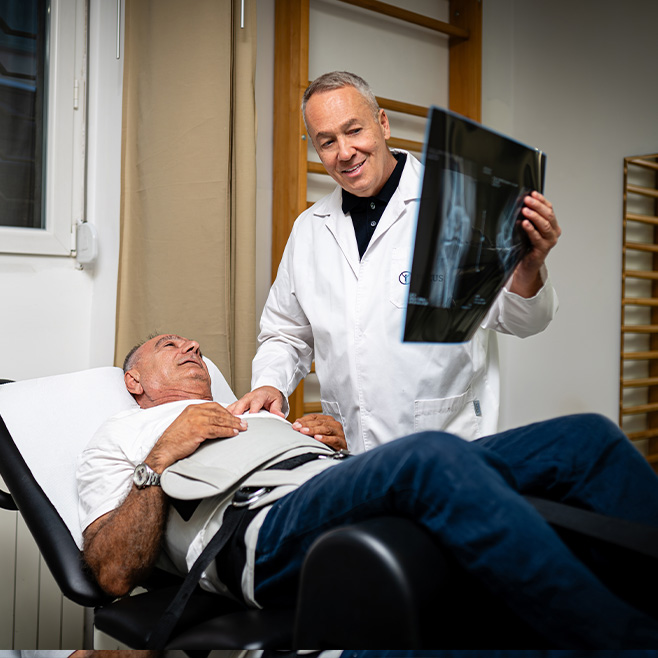
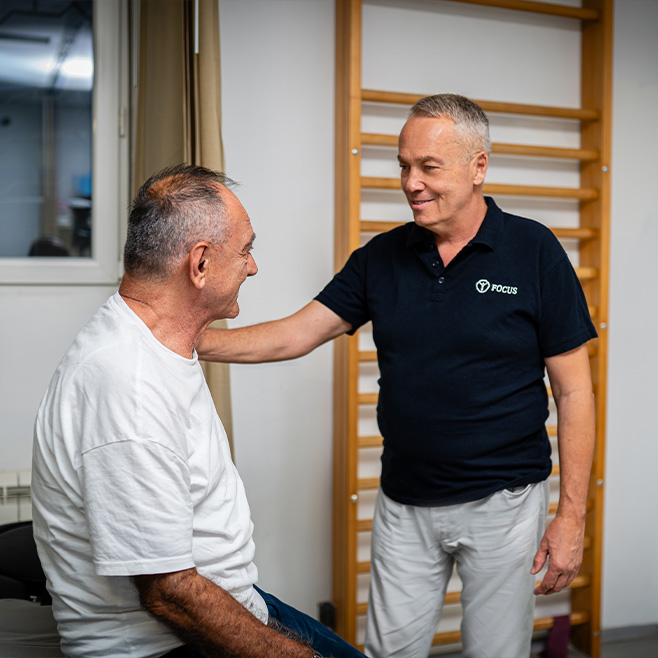
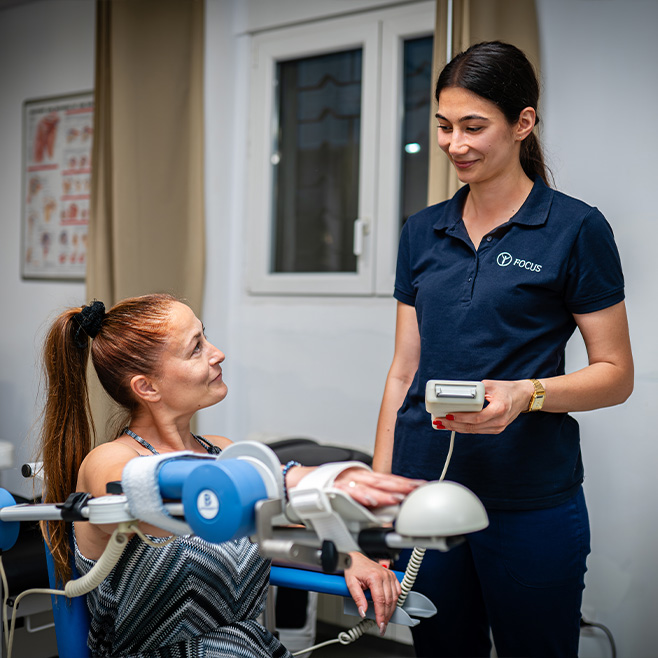
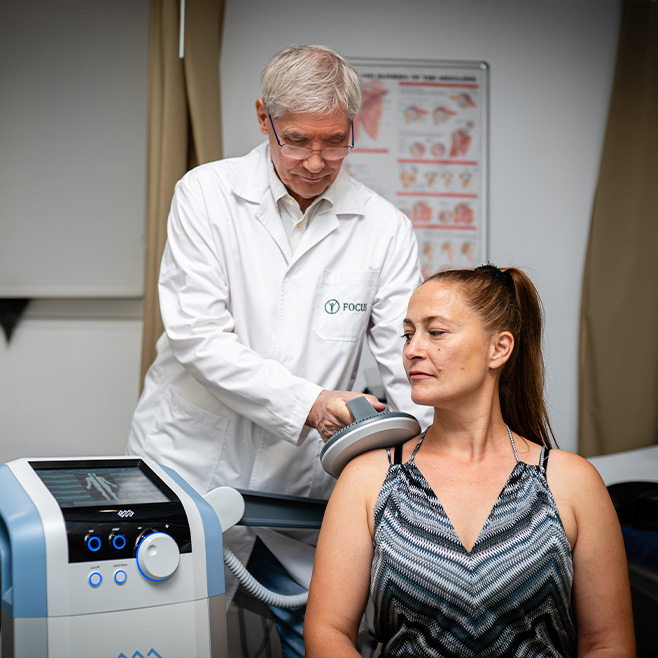
See the experiences of our satisfied patients who successfully recovered with the help of our physical therapy. Get acquainted with the testimonies of patients who faced various joint injuries, sports knee injuries, back injuries and similar problems, which we quickly, efficiently and successfully treated.
Aesthetic surgery
Focus Fizikal is a leading private clinic for physical therapy in Belgrade. For more than 10 years, we have been providing high-quality services that enable quick recovery and healing of our patients.
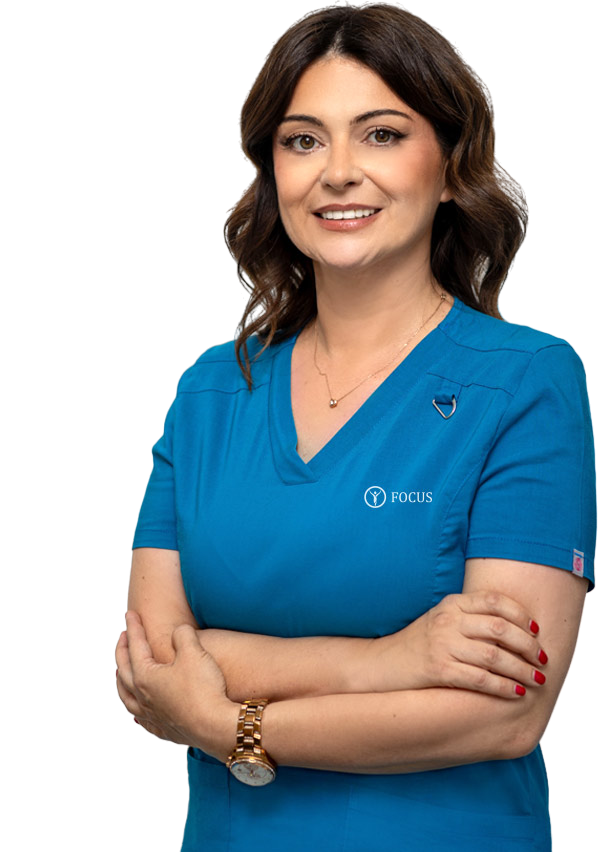
For all our current and future patients, we have made it possible to schedule an appointment online.